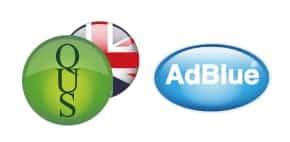Latest News
Step-by-Step Guide to Using AdBlue® in Your Vehicle
AdBlue® is a high-purity urea solution used in Selective Catalytic Reduction (SCR) systems in diesel engines to reduce nitrogen oxide (NOx) emissions. When injected into the exhaust stream, AdBlue® Solution converts harmful NOx emissions into harmless nitrogen and water vapour, making it an essential component for meeting environmental standards.
Step 1: Identify AdBlue® Requirement
Check your vehicle’s manual to determine if it requires AdBlue®. Most modern diesel vehicles, especially those manufactured after 2015, are equipped with SCR systems that need AdBlue®.
Step 2: Locate the AdBlue® Tank
The AdBlue® tank is typically separate from the diesel fuel tank. Common locations include:
- Next to the diesel fuel filler neck.
- In the boot/trunk.
- Under the bonnet/hood.
Refer to your vehicle’s manual for the exact location.
Step 3: Purchase the Correct AdBlue®
Ensure you buy AdBlue® from reputable suppliers to avoid contaminants. Look for ISO 22241 certification to guarantee quality and purity. AdBlue® is available at most service stations, automotive stores, and online. AdBlue® equipment and related products are also available for purchase online.
Step 4: Fill the AdBlue® Tank
- Turn Off the Engine: Ensure the vehicle is turned off and parked on a flat surface.
- Open the AdBlue® Tank Cap. This is usually blue and clearly marked.
- Pour AdBlue® Carefully: Use a funnel to avoid spills. Many AdBlue® containers come with a nozzle for easy pouring.
- Do Not Overfill: Fill the tank slowly and stop when it reaches the maximum fill line.
- Secure the Cap: Ensure the tank cap is tightly closed to prevent contamination.
Step 5: Reset AdBlue® Warning Indicators
After refilling, turn on your vehicle. Some vehicles may automatically reset the AdBlue® warning indicator. If not, consult your vehicle’s manual for instructions on resetting the warning light.
Step 6: Regular Maintenance and Monitoring
- Monitor AdBlue® Levels: Regularly check the AdBlue® level, especially before long trips.
- Scheduled Maintenance: Include AdBlue® checks in your routine maintenance schedule.
- Store Properly: Keep AdBlue® in a cool, dry place to maintain its efficiency. Avoid direct sunlight and extreme temperatures.
Troubleshooting Common AdBlue® Issues
Low AdBlue® Warning Light
If the warning light appears, refill the tank as soon as possible. Driving without AdBlue® can result in the engine entering limp mode or failing to start.
Incorrect Fluid Usage
Never mix AdBlue® with diesel fuel or any other fluids. Doing so can damage the SCR system and lead to costly repairs.
Crystallisation and Clogging
AdBlue® can crystallise in extreme cold. Ensure your vehicle’s heating system for the AdBlue® tank is functioning properly. If you experience clogging, seek professional maintenance.
Using AdBlue® is a straightforward process that plays a vital role in reducing your vehicle’s emissions and maintaining its performance. By following this step-by-step guide, you can ensure your diesel vehicle runs smoothly and complies with environmental standards. For more tips and information on vehicle maintenance, visit the best AdBlue suppliers uk

